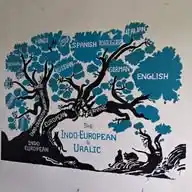
English Studies
February 9, 2025 at 01:47 PM
Call for contributions
Title: Theology, Religion, and Mad Max: Rising from the Ashes
Edited by: Yael Thomas Cameron, Auckland University of Technology, New Zealand; Vernon W. Cisney, Gettysburg College, and Jon Hoskin, Phd.
Mad Max is a post-apocalyptic film franchise that first wormed its way into the black matter of popular culture back in 1979, becoming a cult classic in the process. With the threat of nuclear war in the zeitgeist of the 1970s, a dystopian post-nuclear universe was crafted by creators of the original film Mad Max, George Miller and Byron Kennedy. Played out in an Australian “Wasteland” with civilization struggling, red in tooth and claw, to rebuild after nuclear holocaust, the twists and turns in Mad Max and its sequels offer a myriad of intersections with biblical and theological narratives. Mad Max lends itself as a metaphor for humanity after The Fall re-imagined, or the children of the Exodus looking for God in the desert, also drawing on Nordic gods and Valhalla as inspiration. In the chaotic, bloodthirsty action of this world ruled by Master/Slave dichotomies, the titular anti-hero, Max Rockatansky, takes the form of a reluctant (and sometimes mad) messiah. The franchise extends, so far, through four sequels to Furiosa: A Mad Max Saga, released in 2024, with each film in the franchise being more ambitious and audacious than the last.
The world of Mad Max is a hellscape where people live in abject desperation, fighting for survival, community, meaning, and redemption amidst the violent power struggles of the bloodthirsty tyrants who have emerged from the ashes. It is precisely in the Wasteland where theological questions arise out of the chaos, where all semblances of utopian Enlightenment ‘progress’ have vanished. Here, the search for the holy becomes most pressing. Just as the prophets of old wandered in the wilderness, perhaps it is in the unforgiving desolation of Miller and Kennedy’s alternate world that the ‘still, small voice’ of biblical note that speaks so powerfully to Elijah rises again. The final epigraph to Mad Max: Fury Road (2015) is attributed to the “First History Man,” and reads, “Where must we go… we who wander this Wasteland in search of our better selves?” Where indeed? Fury Road, along with the recent Warner Brothers release of Furiosa: A Mad Max Saga, are unique offerings in the series, with their focus moving to women as heroines who fight back against the patriarchal and misogynistic status quo, intriguingly offering hints of a divine feminine spirituality in the Vuvalini (Many Mothers), with echoes of Eden in “The Green Place.” With contemporary politics positioned strongly along a gendered, religious divide, there has never been a better time to explore the theological, religious and spiritual discourses provoked by this franchise.
This edited book is interested to explore a range of themes regarding, theology, religion and spirituality in Mad Max universe in the films, and the various canonical comic book prequels and sequels. Chapters might include explorations of spiritualities, biblical themes, theology, mythology, ethics, religions and religious practices in Mad Max, and especially critical studies featuring feminist, queer and other critical perspectives such as public/social pedagogy and pedagogy of cinema. This book will be an addition to the Theology, Religion, and Pop Culture Series (Bloomsbury), and while it imagines a broad range of readers, it will be of particular value for those with an interest in religion as it presents cult films, and comics, as well as academics interested in intersections between religion, spirituality, and culture.
Chapter topics could include but are not limited to:
What does ‘redemption’ look like in the Wasteland?
Is hope, as Max says in Fury Road, a “mistake”?
God or Gasoline?: What sort of theological critique does the Wasteland obsession with fuel offer to our own geopolitical landscape?
Mad Max and the end of metaphysics
Immortan Joe and the power of myth-making
Immortan Joe and the commodification of the afterlife
The Sacred and profane in the landscape of Mad Max
Explore the messianic dimensions of Lord Humungus, Aunty Entity, Immortan Joe, and Furiosa.
The Cult of the Car in Mad Max
Vuvalini—expressions of the feminine divine in Mad Max
Queer spiritualities in Mad Max
Prophecy in Mad Max as pedagogy of cinema
Maiden, Mother, Crone in Fury Road
Reading “The Green Place” as Eden
The Church of Mad Max as public pedagogy
The fetish of the (sacred) text in Mad Max
The problem of evil in Mad Max
Predestination in Mad Max
Sexuality and religion in Mad Max
The ethics of Max Rockatansky
What is the relation between theology and politics in the Citadel, Bartertown, or Planet Erf? How might thinkers such as Carl Schmitt, Thomas Hobbes, Jacob Taubes, St. Augustine, Moses Mendelssohn, Slavoj Žižek, or Giorgio Agamben offer insight?
Reading The Fall in Mad Max
Imago Dei: monsters and men in Mad Max
Ecospirituality in Wasteland
The fear of Eve: misogyny and Mad Max
Spirituality and Madness in Mad Max
Sacrifice and the death cult in Mad Max
Valhalla, Valkyries and the Nordic neo-pagan in Mad Max
Timeframes:
Please send a 300-500 word abstract, accompanied by a brief CV including publications, to [email protected] by June 1, 2025. Acceptance notifications will be sent out June 20, 2025. Manuscripts are due on Dec 1, 2025.